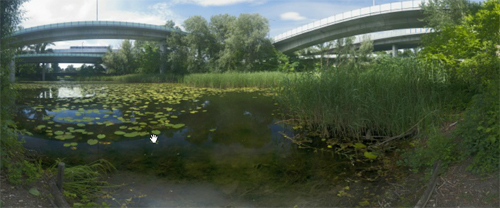
They’ve come from around the world, but they’re also nearby. Eight panoramic images of small-scale nature by photographers on three continents will fill the November issue of an online magazine co-edited by University of Guelph biologist Alex Smith and two Guelph grads.
“Nearby Nature” is the theme of this month’s edition of GigaPan Magazine published by Carnegie Mellon University. The online publication highlights the use of GigaPan photo technology and gigapixel panoramic images as a tool in science, education and art.
Smith and his biodiversity scientist colleagues – landscape architect Ken Tamminga, BLA ’83, and entomologist Dennis vanEngelsdorp, B.Sc.(Agr.) ’93 and M.Sc. ’95, both at Pennsylvania State University – chose eight shots from among about 80 entries submitted this past summer from around the world. Another co-editor was Mary Jo Daines at Carnegie Mellon’s CREATE lab.
The November issue will highlight nature in your backyard – or, as Smith prefers to frame it, “your backyard in nature.” The images include panoramic shots of a pond and highway overpass in Vienna, a Spanish vegetable garden, a bog in Vermont, a community bike path near a Montana glacier and a beach in Singapore.
In the accompanying text, Smith and his co-editors discuss the use of gigapixel imaging to focus on aspects of nature that are practically underfoot but often overlooked.
“Nature and biodiversity remain nearby and remain there for us to explore and be inspired by,” says Smith, a professor in the Department of Integrative Biology and member of U of G’s Biodiversity Institute of Ontario. “Our own species is one embedded within nature and not separate from it.”
As a citizen science project, he says, the publication invites non-specialists to record nature and monitor changes in biodiversity. Online viewers may comment, ask questions and annotate items in the published shots.
For this issue, entrants had been invited to capture images in summer solstice week in June. The project will be repeated during the December winter solstice.
All three scientists have received support from the Fine Outreach for Science program to support their use of gigapixel imagery.
As part of his own biodiversity studies, Smith uses a robotic GigaPan camera to document week-by-week changes in the University’s Dairy Bush – what he calls another example of nearby nature. Each of his shots shows a 360-degree sweep taken during an hour at the same spot in the forest.
View the publication at http://gigapanmagazine.org.
